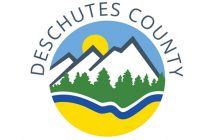(Carbon capture | Graphic provided by chemistry professor May Nyman, OSU College of Science)
Oregon State University chemistry professor May Nyman has been selected as one of the leaders of a $24 million federal effort to develop technologies for combating climate change by extracting carbon from the air.
The funding is spread among nine research projects, with Nyman receiving $1.6 million over three years to lead a collaboration that includes scientists from the Argonne National Laboratory as well as Oregon State.
The work by Nyman, OSU computational chemist Tim Zuehlsdorff and Argonne’s Ahmet Uysal and Michael Sinwell is part of a nine-project carbon capture and storage mission being funded by the U.S. Department of Energy.
Nyman’s team will explore how some transition metal complexes can react with air to remove the greenhouse gas carbon dioxide. These complexes appear to extract an impressive amount of carbon dioxide – four CO2 molecules taken up for every transition metal ion – and convert it to a stable solid, a metal carbonate similar to what is found in many naturally occurring minerals.
“That 4:1 ratio is particularly appealing,” Nyman said. “It’s four times what a typical amine solution does.”
Amine solutions are commonly used as carbon dioxide removers in the processing of natural gas. The transition metals that the team will exploit, such as titanium and vanadium, are located near the center of the periodic table; the name arises from the transition of electrons from low energy to high energy states and back again, giving rise to distinctive colors.
“I discovered this chemistry while doing uranium chemistry, like 12 years ago, where I noticed this weird phenomenon of certain molecules that would sometimes undergo this metamorphosis and in the end turn into carbonates,” she said. “Uranium is useful for a lot of things, but it would be a tough sell for carbon capture. But we’ve found some transition metals that will do the same thing, so now we’re making comparisons between uranium on the bottom of the periodic table and transition metals in the middle.”
Iconic in science for more than a century, the periodic table of the elements is divided into rows known as periods, columns that are called groups and roughly rectangular areas known as blocks. Elements within a column bear similar chemical traits, and trends such as metallic character and electron affinity run across the table.
“What we’re doing is very exciting fundamental chemistry that can expand our understanding of the periodic table while also, hopefully, creating useful technologies,” Nyman said. “We’ll work towards understanding the mechanisms of the carbon capture, how to stabilize the molecules so we can store them until we need them and how to put them in their reactive form. Later we will exploit other properties of the transition metal to determine if we can convert the carbonate back into technologically useful molecules.”
Technologies for mitigating carbon dioxide at the point of entry into the atmosphere, such as a factory, are the most well developed in the carbon capture area. Some of them involve nanomaterials known as metal organic frameworks, or MOFs, that can intercept CO2 molecules through adsorption as flue gases make their way through smokestacks.
Facilities that filter carbon from the air are also beginning to spring up around the globe – the world’s largest opened this month in Iceland – but they’re still in their infancy and not ready to make a large dent in the worldwide emissions problem. Over a year, the new Iceland plant expects to be able to draw out carbon dioxide in an amount equivalent to the annual emissions of about 800 cars.
“A growing tree is the best thing for pulling carbon dioxide out of the air, and it converts it to biomass,” Nyman said. “Our molecules don’t do that – they turn it into a substance more like rocks, so they’re more analogous to an artificial coral reef than an artificial tree. I love fundamental chemistry, but I’ve been wanting to guide my research team towards applied science too, and this gives us that opportunity.”




